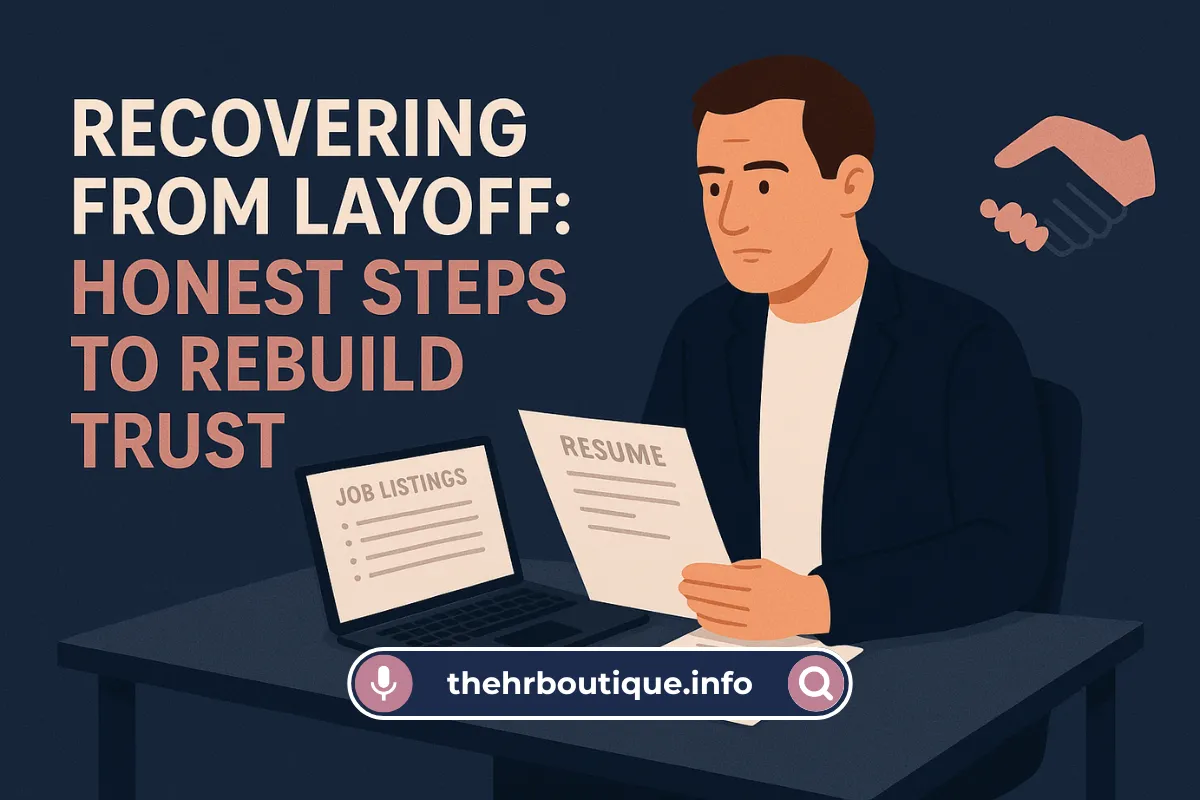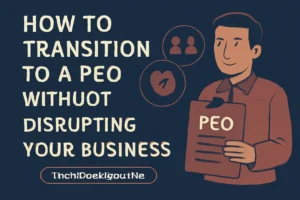Let’s be real – layoffs suck. They’re messy, painful, and leave everyone feeling rattled. If you’re reading this, you’re probably trying to pick up the pieces after cuts at your company. Maybe you’re a manager wondering how to look your team in the eye. Or an employee who’s suddenly questioning everything.
Here’s the good news: trust can be rebuilt. But not with fancy HR speak or empty promises. It takes real, human connection. Let’s talk about how.
Why Everyone’s Freaking Out (And That’s Normal)?
Picture this: Your coworker – maybe even your work bestie – just got walked out. Their desk is empty. Their Slack is gone. Of course, you’re thinking:
- “Am I next?”
- “Should I start updating my resume?”
- “How can I trust anything leadership says anymore?”
These aren’t overreactions – they’re completely normal. Layoffs don’t just remove people, they remove trust. And that trust was probably shaky to begin with.
The 5-Step “No BS” Guide to Fixing This
1. Stop the Corporate Robot Act
We’ve all heard it: “This decision wasn’t made lightly…” eye roll
Instead try:
- “This hurts. We know it does.”
- “Here’s exactly why we had to do this…” (give real numbers if you can).
- “I don’t have all the answers, but here’s what I know…”
Pro Tip: If your explanation includes the phrase “synergistic optimization,” start over.
Let People Be Pissed Off
Your team needs to vent. Give them safe ways to do it:
- Open Q&A sessions (no sugarcoating).
- Anonymous feedback channels.
- One-on-one “how are you REALLY doing?” chats.
Remember: Anger isn’t the enemy – silence is. When people stop complaining, they’ve already checked out.
3. Show Your Work
People don’t trust promises anymore. They trust patterns. So:
- If you say no more layoffs, prove it (freeze hiring at higher levels first).
- Share weekly updates – even when there’s nothing “new” to share.
- Admit mistakes ASAP (“We messed up the comms on this – here’s how we’ll fix it”).
4. Fix the “Survivor Syndrome”
The people who stayed? They’re dealing with:
- Guilt (“Why me and not Sarah?”).
- Anxiety (“What if round two comes?”).
- 2x the work (because let’s be real, those roles didn’t just disappear).
Address this head-on:
- Acknowledge the extra workload.
- Be clear about priorities (“We’ll do X, but Y can wait”).
- Publicly recognize those stepping up.
5. Make Small Wins Visible
Right now, everyone feels like the company is sinking. Counter that by:
- Celebrating every tiny victory.
- Showing direct impact (“Because we shipped X, we saved Y jobs”).
- Giving teams autonomy to fix what’s broken.
What NOT to Do (Unless You Want More Resignations)?
🚫 The “Fresh Start” Speech
“Let’s put this behind us!” Nope. You don’t get to rush the healing process.
🚫 The Bait-and-Switch
“No more cuts!” …three months later… “About that…”
🚫 The Productivity Push
“Now that we’re leaner…” is code for “prepare for burnout.”
The Real Timeline for Recovery
Don’t expect everyone to bounce back in a month. Here’s what to expect:
- First 30 days: Pure survival mode.
- 30-90 days: Cautious optimism (if you’re doing it right).
- 90+ days: Real trust building begins.
Final Thought: This Is Your Chance
Weirdly enough, layoffs can create stronger teams – but only if you handle them with honesty and humanity. The companies that come back strongest are the ones where leaders had the guts to say:
“We messed up. This hurts. But here’s exactly how we’ll move forward – together.”
So, which of these steps will you try first? (And if you’re the employee reading this – what do you wish your leaders would do?)





